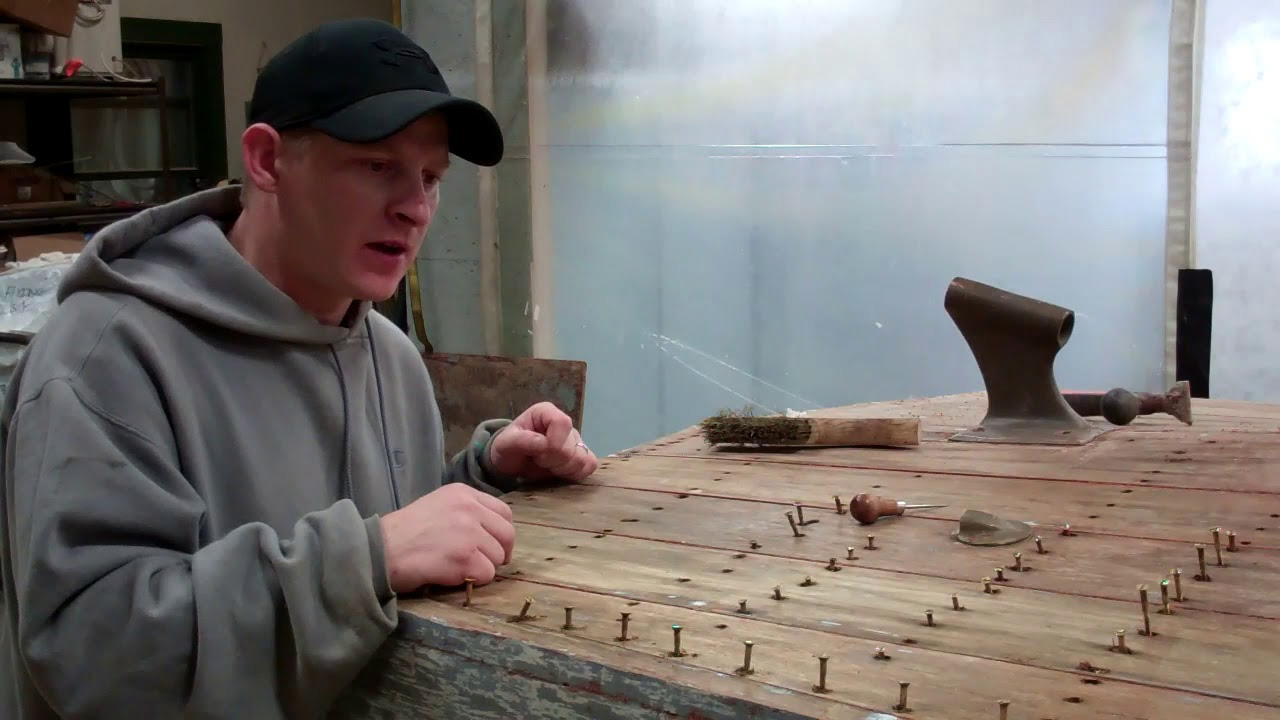We clean fastener countersinks using a Blair Equipment 11090N Rotabroach Cutter Kit, which is available from Amazon.com (https://www.amazon.com/Blair-Equipmen…)
Yes, even if a plank will be reused and is filled with either a wood or putty, we remove its wood bungs, but in this application always choose a cutter that is smaller than the diameter of the bungs being removed. The cutter bores through the bung without touching the countersink’s edges and is then cleaned using one of the awls we have on hand.
We are much less careful when releasing failed planking, and often use a cutter one size larger than the diameter of the countersink. The goal here is removing the plank without breaking it so it remains available to patterning.
The air chuck is key here, as RJ demonstrates in the clip. With our compressor set at 110 PSI, the chuck delivers a concentrated blast of air that (almost always) leaves the countersink bereft of waste material.
Finally, if you have a super steady hand, as RJ does, you too can back the screws out with an impact gun, not a hand screwdriver.
When stripping a bottom, be sure to remember RJ’s admonishment. Climb beneath the hull, or down into if she’s not flipped yet, and number the intermediate frames, sometimes referred to as battens.
While we will bed them in 3M5200 during final assembly, they are originally installed by driving screws from outside the hull, through the external planking and inner skin, and into the batten without any adhesive applied to the batten or inner skin.
Numbering these battens before they’ve dropped to the floor and skittered about will save endless time and frustration during reassembly.
One Reply to “How to Open Countersinks and Remove Fasteners from the bottom of a 1938 19’ Chris-Craft Custom Runabout”
Comments are closed.


I have a ’66 Century. When preparing bottom to accept the new bottom thickness for a 5200 bottom. Should I remove all the battens then machine frames/ribs to accept the new thickness (3/16 + 1/2)?
If not ?
I notice in one of your recent videos you cut the under plywood into strips on a CC. Will you do the same on a Century?
Thanks in advance!